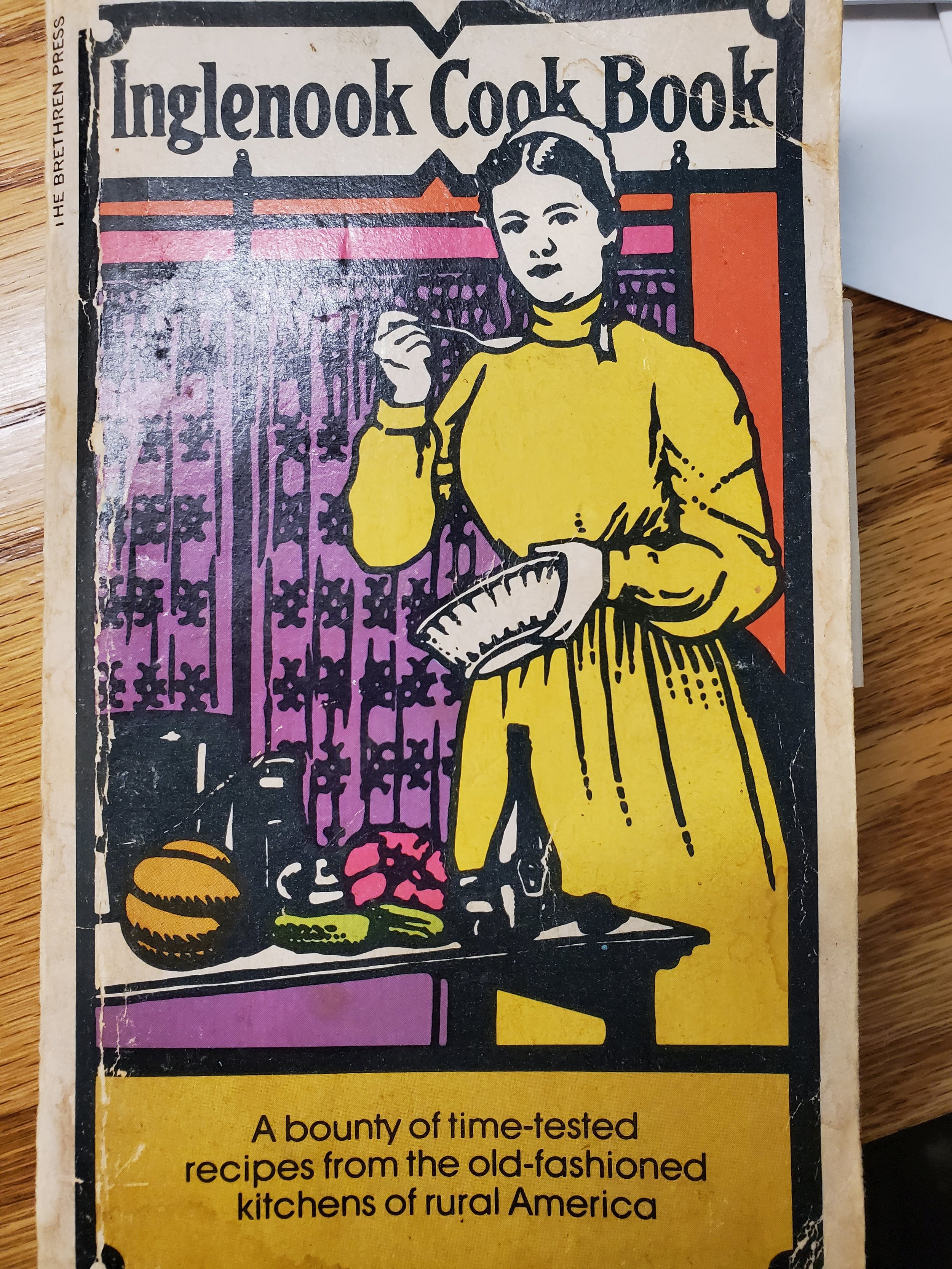Historical method of: Restoration of Drowning Persons
/You know that I’m always very interested in historical medical procedures. It just amazes me how much we’ve learned about caring for the human body – and still we know so little!
[SPOILER ALERT: In my next book someone is very sick.]
In researching for my next book, I was reading the Inglenook Cook Book (Brethren Press, Elgin, IL, 1974). This book describes itself as “A bounty of time-tested recipes from the old-fashioned kitchens of rural America”. I talked about this cookbook here a couple of years ago, but today I ran upon a Simplified Method for the Restoration of Drowning Persons and I simply had to share it with you. Now, my copy was printed in 1974, but the Cookbook was originally copywritten in 1911. Our modern method of CPR is from the 1950’s.
Following is the method verbatim:
The following simplified method for the restoration of drowning person, and of those who have lost consciousness through asphyxia or any other cause, was developed by Dr. J.V. Laborde, of the School of Anthropology, in Paris. It has proved efficacious in many cases. In one cited, of a child who had been submerged for nearly fifteen minutes, the return of breathing was accomplished in ten minutes. The translation here given is from a leaflet which Dr. Laborde distributes among his pupils:
1. As soon as the drowning man has been taken from the water, force open his mouth. If the teeth are clinched, separate them with the fingers, or by means of any hard object – e.g. a piece of wood, the end of a can, the handle of a knife, of a spoon, of a fork.
2. Firmly seize between the thumb and the first finger of the right hand the end of the tongue, using your handkerchief, or any piece of linen, to prevent the tongue from slipping; then repeatedly, rhythmically, and with decision, pull it from the mouth, and relax it alternately – at the rate of at least twenty times a minute, imitating the cadenced movements of expiration and inspiration.
3. At the same time, introduce, far back into the throat, the first finger of the left hand, pressing upon the base of the tongue, so as to induce vomiting, and thus free the stomach of the water or food which encumbers it.
4. This treatment, the most efficacious known method of bringing back the respiration, must be begun without the slightest delay, and persistently continued for a half hour, an hour, or more. At the same time all the usual remedies must be applied. Most important are the removal of the clothing, friction over the whole body, pressure upon the anterior part of the chest, the restoration of the bodily heart, and where it is possible, the application upon the region of the heart of compresses of very hot water.
The same method may and should be applied, in the same manner, in all cases of asphyxia and of syncope (loss of consciousness), from whatever cause.
When a person has been taken from the water in an unconscious condition, the old Howard system of resuscitation [should] be used. It consists of kneeling over the lower part of the chest and relaxing the pressure. This simple operation should be repeated nine or ten times during a minute. The treatment should not be applied in a harsh manner. The Howard system is in vogue in most of the navies of the world. The Sylvester system is another good method. To get the water from the stomach and chest the patient is stripped to the waist and placed face downward with the pit of the stomach raised above the level of the mouth by a roll of clothing or other material placed transversely beneath the trunk. The tongue must be held out, the larynx kept open, and the mouth and throat cleared of mucus. Efforts to resuscitate should be continued and hour, for apparently inanimate individuals have been brought to life at the end of that time, after having been in the water an half hour or longer. Attempts to restore respiration should be accompanied by friction, such as the administration of stimulants and the application of heat to the abdomen and lower extremities.
Howard, Benjamin. Plain Rules for the Restoration of Persons Apparently Dead from Drowning: As Taught Under the Auspices of the Metropolitan Board of Health of the City of New York. Treat, 1869.
NOTES from Beth:
Do I even need to say, Please don’t try this at home; we understand a much better method now and here’s a link to instructions for it, in case you’re wondering.
The Sylvester system mentioned in the article is from 1857 and the Howard method from 1871.





